
Sustainability Preserving Organisms, Ecosystems, & Human Cultures


Sustainability Objectives:
- Define sustainability in reference to humans and the environment.
- Provide examples of three principles of sustainability that are derived from nature.
- Describe how climate change relates to sustainability.
We often hear about “living sustainably” and “sustaining a species” or a habitat. This section provides a context for the different aspects of sustainability.
Sustainability generally refers to an ability to survive and adapt over time.
For our species, sustainability has two components: preserving Earth’s natural systems that we are dependent on and preserving our diverse cultures.
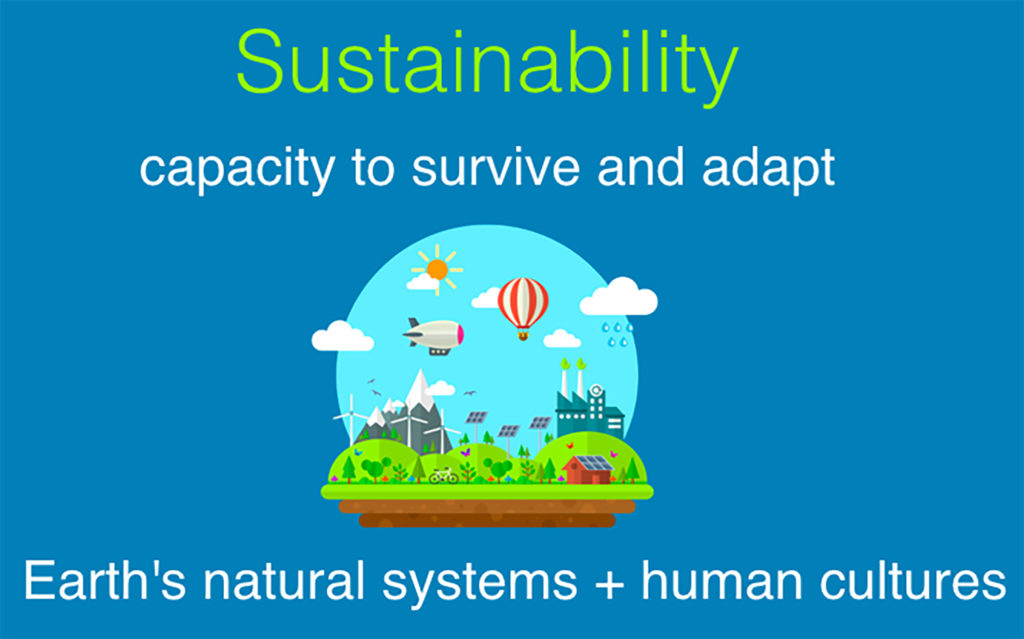
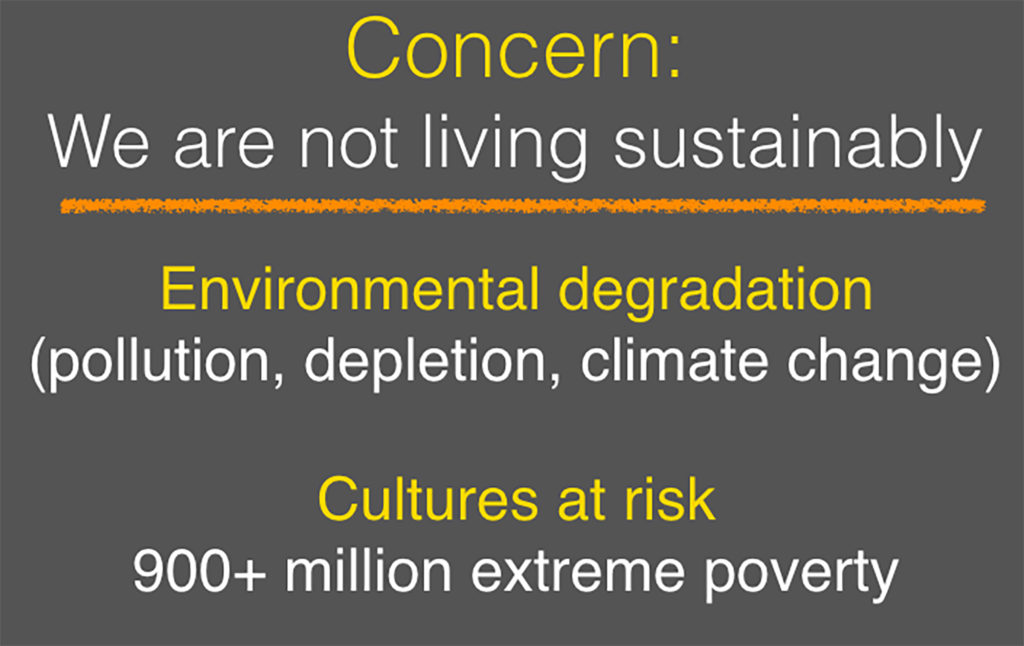
Focus is currently on how to reduce environmental degradation and support cultures that may not survive due to limited resources.
Often the goal of sustaining human culture, like farming practices, may seem at odds with attempting to save species within their habitats. In recent decades, potential stakeholders have been trying a team approach to improve sustainability on multiple levels.

Thinking back to the anadromous salmon story, some species have significant cultural significance and rely on multiple ecosystems for survival. Some people see the ability to sustain other species like salmon as an indicator of whether we can sustain ourselves.
One way to think about sustainability of our species is to study other species and ecosystems that have survived over long periods of time.
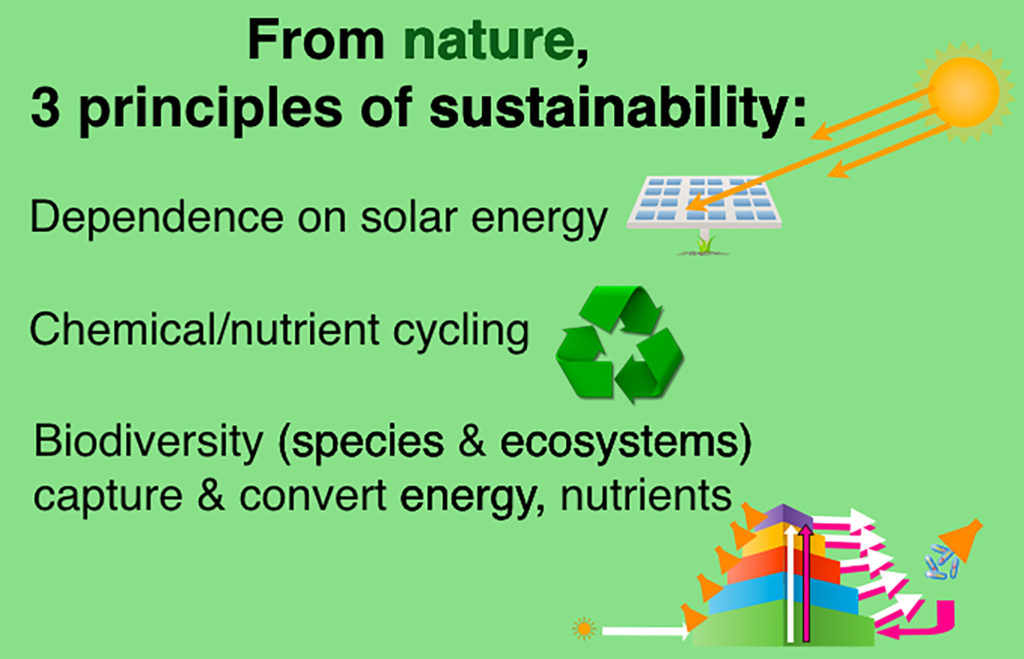
The three general principles that have emerged from research of sustained species and systems are:
- utilizing solar energy, a perpetual resource.
- recycling nutrients over and over.
- varied organisms and environmental characteristics enabling different ways to utilize energy and nutrients.
From the class so far, nutrients cycle through food webs, but energy is lost as ___.
From earlier in the class, nutrients cycle through food webs, but energy is lost as ___.
Developing and utilizing perpetual energy sources is considered to be a critical component of sustaining our species into the future. We’ll have more on this in the next section.


Nutrient cycling is challenging to mimic in human systems. Recycling takes energy, and many products include materials that are difficult to manage after use. We are still a long way off duplicating the close nutrient cycling found in ecosystems with high biodiversity like tropical rainforests or coral reefs.

Decomposition is carried out by ____ and ____.
Our food supply is directly impacted by these organisms. Sustainability of our species and Earth’s ecosystems depends on a variety of microscopic organisms and their complex interactions.
Climate Change and Sustainability
One of the most significant environmental issue we currently face is a changing global climate. The others include adequately feeding and providing medical care for our increasing human population. Unfortunately, the two are linked together. Drought is threatening crop yields and infectious diseases are spreading with mosquitoes moving to warming habitats.
This is the ultimate sustainability challenge: trying to preserve Earth’s natural systems that we are dependent on and preserve our diverse cultures at the same time.

The main distinction between climate and weather is a matter of ___.
Climate models plot anticipated trends based on accumulated weather events over time. Often predictions are not straight forward. For example, some parts of the ocean are warming; others are cooling. Hurricanes are becoming more intense in areas of warmer water, but may become less frequent in cooling water. Communicating this complexity is challenging.
As mentioned earlier discussing climate change, if you are interested in keeping current with climate data, NOAA.gov is a good place to start because many data sets are available as well as research papers and summary documents.
Our climate is created by atmospheric gases that retain heat. The “greenhouse gases” are released into the atmosphere by natural activities like forest fires and volcanic eruptions and human activities like ___________.
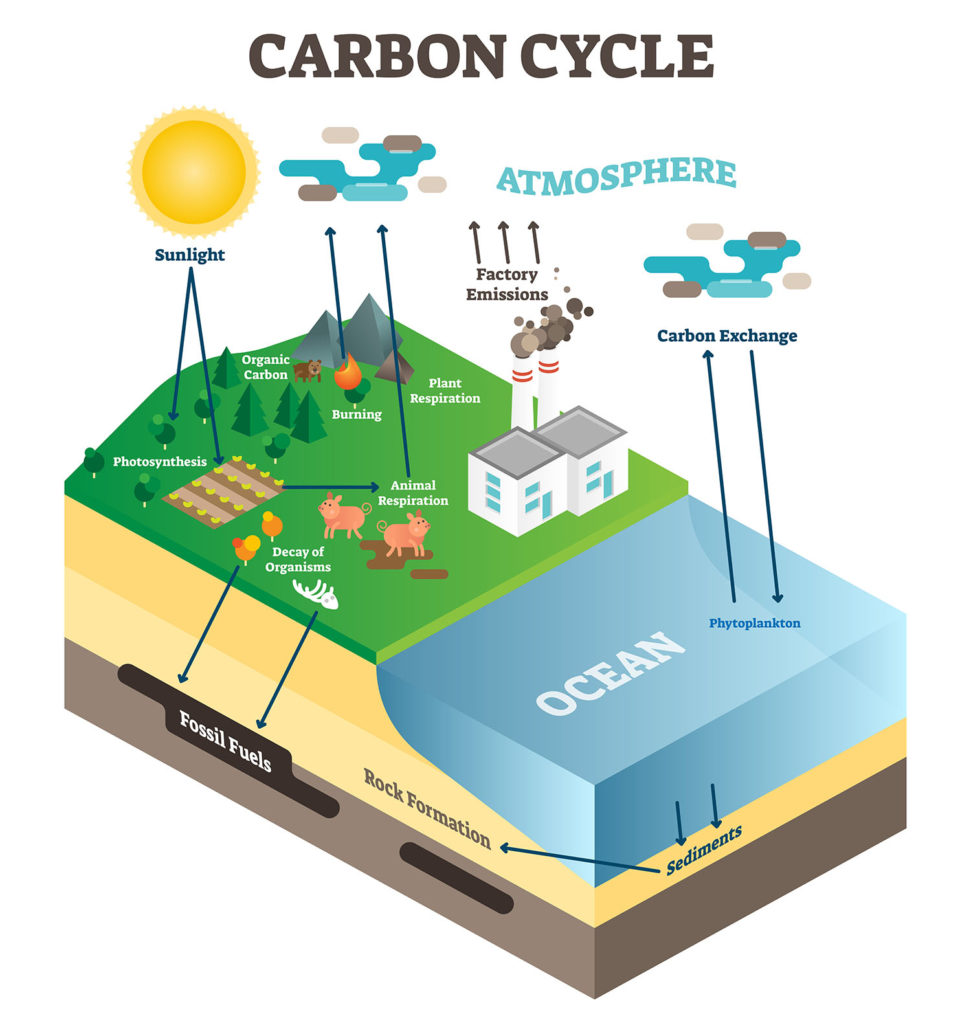
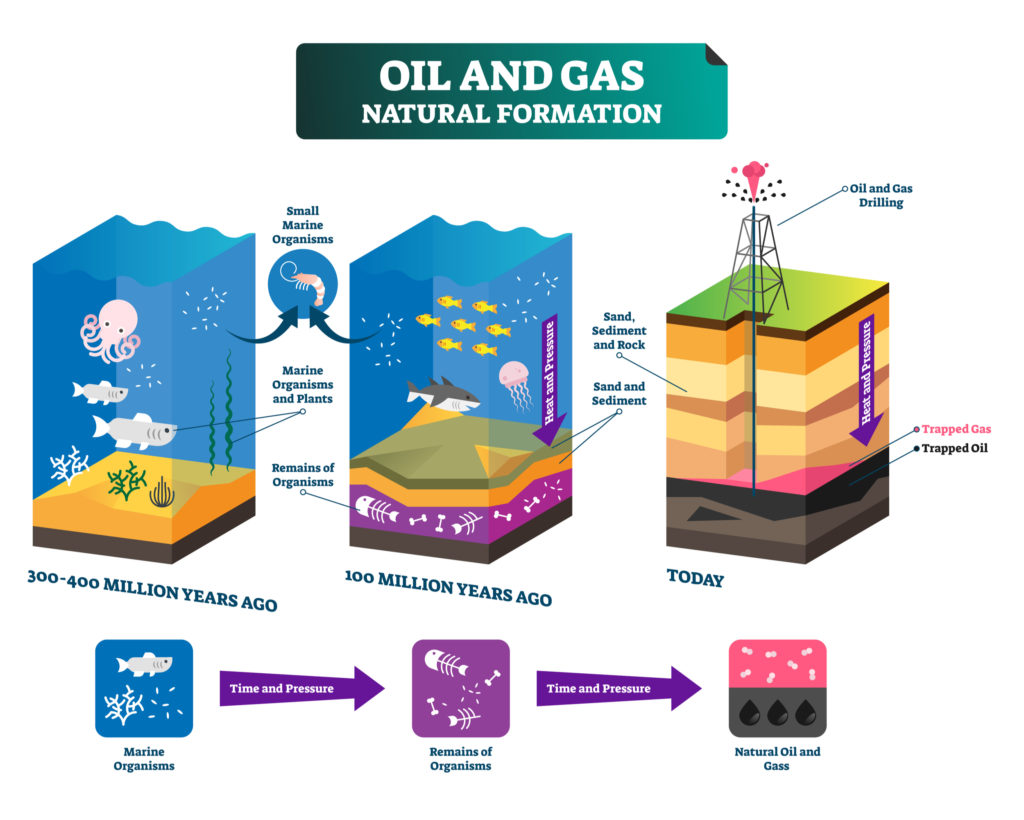
Oil, coal, and gas are the compressed remains of massive numbers of small organisms that were not fully decomposed. Burning these fuels releases energy, analogous to the heat released from a compost pile. Not only heat is released, greenhouse gases, including carbon dioxide are also released.

And here lies the problem. We rely heavily on fossil fuels to support our economies, including the production and distribution of food. Alternative energy sources are coming, but the environmental impact appears to already be severe and increasing. Add on to this the shattering effect COVID-19 is having on our global economy.
This photo is of Miami that is facing challenges associated with sea level rise as well as incoming tropical mosquito species carrying viral diseases.
This is an enormous problem that all generations are now having to deal with. We are all going to need to understand more about sustainability and resource management in the years to come.
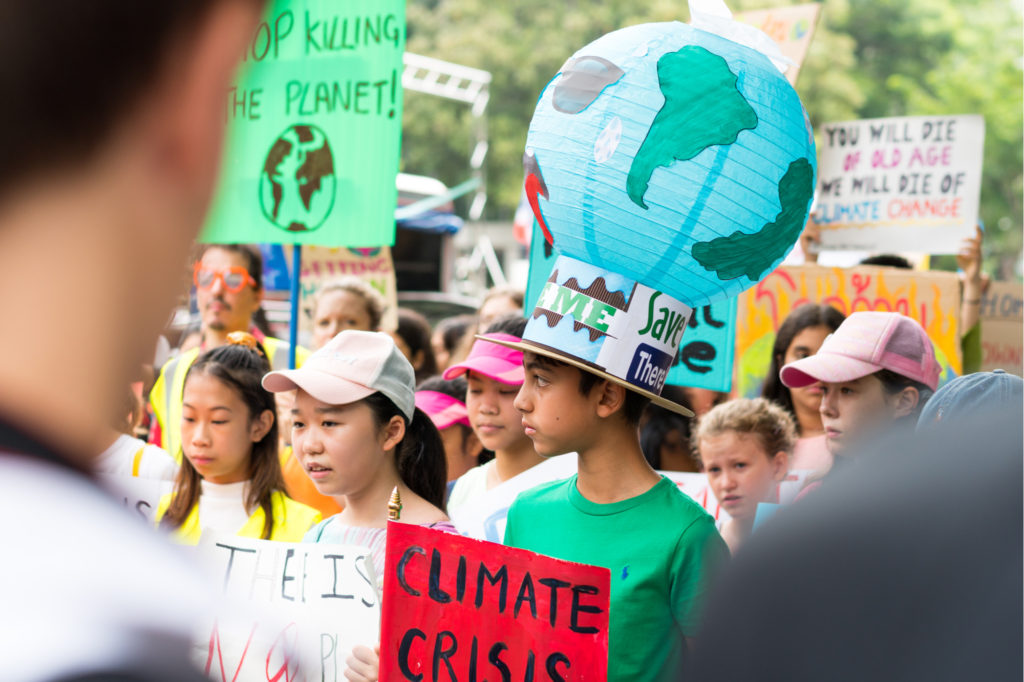
The next section describes resource management, including goals and examples.

Check your knowledge. Can you:
- Define sustainability in reference to humans and the environment?
- Provide examples of three principles of sustainability that are derived from nature?
- Describe how climate change relates to sustainability?



